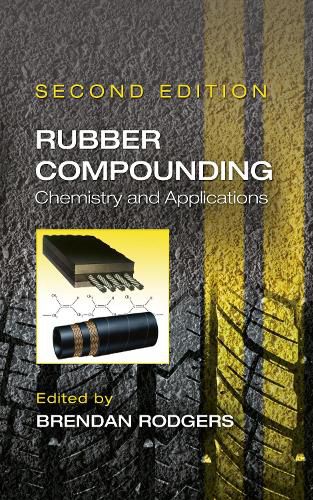Readings Newsletter
Become a Readings Member to make your shopping experience even easier.
Sign in or sign up for free!
You’re not far away from qualifying for FREE standard shipping within Australia
You’ve qualified for FREE standard shipping within Australia
The cart is loading…






Rubber Compounding: Chemistry and Applications describes the production, processing, and characteristics of a wide range of materials utilized in the modern tire and rubber industry, from natural to butyl rubber, carbon black, silica, silanes, and beyond. Containing contributions from leading specialists in the field, the text investigates the chemistry and modification of raw materials, elastomers, and material compounds for the optimal formulation and engineering of new rubber products.
This Second Edition of the bestselling first:
Adds new sections on environmental issues and recycling
Provides more information on hydraulic hose and conveyor belting
Expands the discussion of tire technologies and industrial rubber products
Includes new information on synthetic elastomers
Features extensive references for further reading and exploration
Rubber Compounding: Chemistry and Applications, Second Edition supplies the industrial compounder, teacher, or other academic scientist with basic information on materials used in the rubber industry. In addition, the book addresses a gap in the body of literature available to the chemists in industry and academia.
$9.00 standard shipping within Australia
FREE standard shipping within Australia for orders over $100.00
Express & International shipping calculated at checkout
Rubber Compounding: Chemistry and Applications describes the production, processing, and characteristics of a wide range of materials utilized in the modern tire and rubber industry, from natural to butyl rubber, carbon black, silica, silanes, and beyond. Containing contributions from leading specialists in the field, the text investigates the chemistry and modification of raw materials, elastomers, and material compounds for the optimal formulation and engineering of new rubber products.
This Second Edition of the bestselling first:
Adds new sections on environmental issues and recycling
Provides more information on hydraulic hose and conveyor belting
Expands the discussion of tire technologies and industrial rubber products
Includes new information on synthetic elastomers
Features extensive references for further reading and exploration
Rubber Compounding: Chemistry and Applications, Second Edition supplies the industrial compounder, teacher, or other academic scientist with basic information on materials used in the rubber industry. In addition, the book addresses a gap in the body of literature available to the chemists in industry and academia.